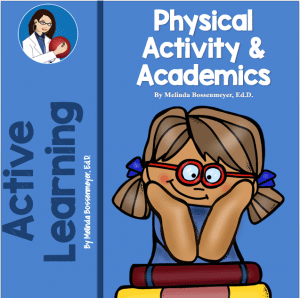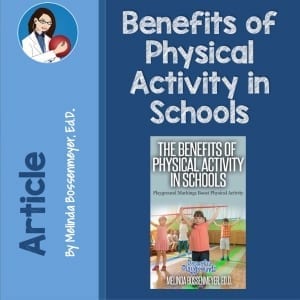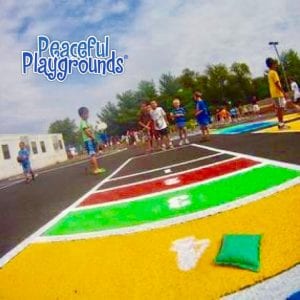Active Kids Make Better Learners
by Dr. Melinda Bossenmeyer, The Recess Doctor

Active Kids Make Better Learners
How does physical activity and the brain interact? According to a medical doctor he called it, “physical activity is like miracle grow for the brain”. We will explore that statement and many other related questions in this article.
“Physical activity has dramatic effects on individuals’ physical mental health,” according to Charles Basch in his report, Healthier Students Make Better Learners.
Basically, educational outcomes are directly influenced by health. We know that students’ fitness levels continue to be low and obesity and overweight categories in youth continue to climb. Therefore, troubling trends toward overall student health and fitness. Is it any surprise that 8.4% of school age youth have been diagnosed with attention-deficit/hyperactivity disorder (ADHD)?
Principal Shalhoub said,
We’ve had a great response to the new playground. The kids love it, the parents love it.
Murrieta Springs Charter School.
Healthier Kids Make Better Learners
Physical activity (which leads to fitness) may also improve student physical health and well-being. Fitness seems to buffer the deterioration of cardiovascular health, bone health, diabetes, and neurological body systems. Physical fitness and aerobic fitness are therefore associated with mental fitness and emotional health as well.
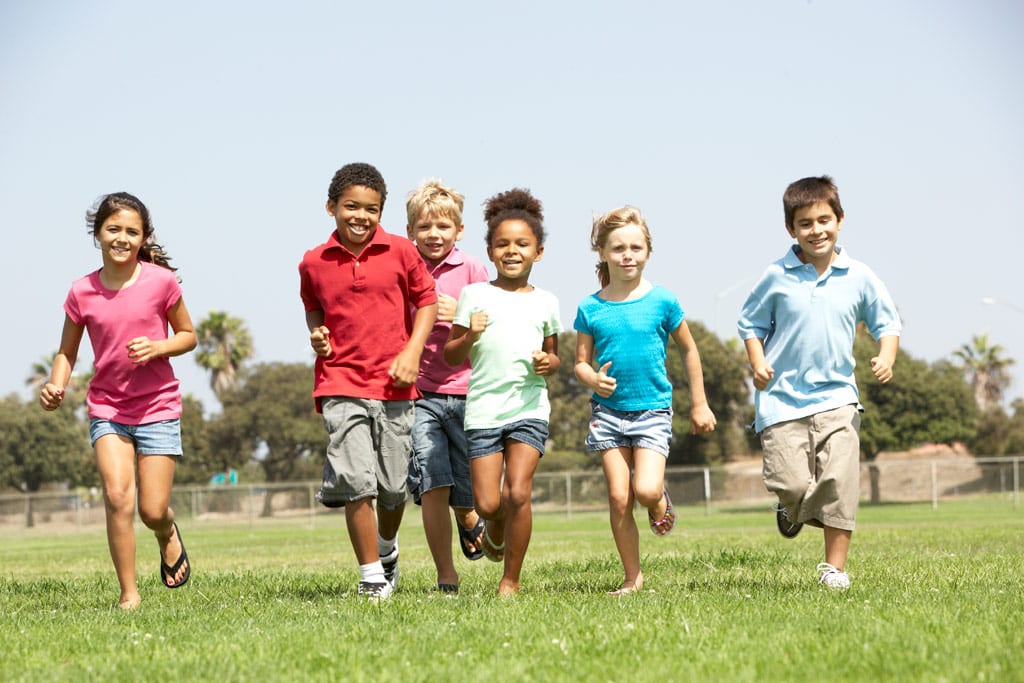
Physical Activity Recommendations
We know that the majority of school–age students do not meet the CDC guidelines for 60 minutes of physical activity daily. This should concern us all. We continue to pour money into new, innovative, and different solutions. Perhaps it would be wiser to shore up what we know works: reinstating physical education and physical activity opportunities in schools.
Physical health risks continue to be a concern. However, neuroscientists and child development literature continue to make a compelling case for the link between a healthy body and a healthy mind. This literature documents the importance of physical education and physical fitness and their effect on academic outcomes.
Physical activity (which leads to fitness) may also improve student physical health and well-being. Fitness seems to buffer the deterioration of cardiovascular health, bone health, diabetes, and neurological body systems. Physical fitness and aerobic fitness are therefore associated with mental fitness and emotional health as well.
Health Benefits of Fitness and Physical Activity
Physical activity affects metabolism and all major body systems. The saying, “A strong mind and a strong body” are now well supported in research. Physical activity affects brain chemistry and cognitive functioning contributing to emotional stability, physical health, and the ability to learn. It is now clear and well supported that physical activity favorably affects cognitive functioning.
Three recent literature reviews conclude that school-based physical activity programs may result in short-term cognitive benefits (Taras, 2005), improve cognitive functioning among children (Sibley & Etnier, 2003), and do not hinder academic achievement (Trudeau & Shepard, 2008). These findings support the case for favorable effects of physical activity or physical fitness on cognitive functioning of youth.
No Child Left Behind legislation was implemented across the nation. Physical education, recess, and related physical activity programs were cut in an effort to raise academic scores in the federally mandated standardized tests. A report from the Centers for Disease Control and Prevention in 2005 found that there is currently no evidence to support the hypothesis that less time engaged in physical activities will be effective in increasing standardized test scores. Their research found that school-based physical activity programs were either neutral or had a positive effect on academic outcomes.
Relationship between Academics and Physical Activity
CDC Report
The CDC report suggested that increased student physical activity and physical fitness can best be achieved through a comprehensive approach (Centers for Disease Control and Prevention, 1997) that includes physical education, wise use of recess and after school times, co-curricular physical activity opportunities, and bicycling or walking to and from school. The nature and scope of school-based physical activity/education programs will vary with the resources available (e.g., human, physical, and social environmental) and with the level of commitment by school administrators.
Physical Activity Opportunities
Both physical education and recess have been found to increase physical activity in children. Quality physical education programs are encouraged to organize learning opportunities to ensure that 50% of the physical education experience is organized around physical activity.
Recess may be another appropriate time to promote physical activity. Research indicates that playtime/recess can contribute significantly to children’s overall levels of moderate to vigorous physical activity.
Other school-based physical activity opportunities include walking or biking to school. These programs are federally funded as a means to get children more active.
Yet, another type of physical activity opportunities in schools are called “brain breaks.” They are short 5-10 minute breaks within the classroom where students have an opportunity to stretch and move, thus integrating physical activities and academic concepts.
The Learning Connection put out by the Action for Healthy Kids Foundation points out many of the academic benefits and what you need to know to ensure your kids are healthy and ready to learn.
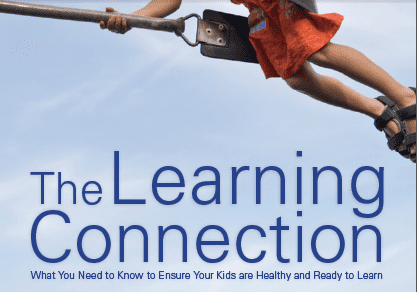
Physical Activity and Mental Health
It’s well known that routine physical activity benefits both body and mind. And there are no age limits. Both children and adults can reap big benefits. A study published in Clinical Psychological Science, a journal of the Association for Psychological Science, explores whether certain factors may help to explain the value of daily physical activity for adolescent mental health. Researchers from the Trimbos Institute in the Netherlands looked at two possible explanations for the link between exercise and good mental health. One was positive self-image and the other was winning friends. They surveyed 7,000 Dutch students, ages 11 to 16.
Yale University child psychologist Alan Kazdin, the editor of Clinical Psychological Science, says the findings show just how bountiful the benefits of exercise can be. “I think it would be too strong to call it an elixir, but it has the broad effects of something like that,” he says.
Kids Aren’t Getting Enough of the Exercise they Need
The brain works in magical ways. Movement allows the brain to rebuild neural networks, process new tasks and skills, and connect its logical and creative sides for optimal performance in school, sports, and life. In a 2011 meta-analysis of 59 studies, researchers found there was a significant positive effect of physical activity on children’s achievement and cognitive outcomes. STACK-Read More………
Let’s Move Initiative
In 2013, the First Lady’s Let’s Move Active Schools Initiative is aiming at similar targets.
First Lady Michelle Obama launched Let’s Move! on February 9, 2010, to unite the country around our kids’ health and create real support for families to live healthier lives. Since then we’ve seen substantial commitments from parents, business leaders, educators, elected officials, military leaders, chefs, physicians, athletes, childcare providers, community and faith leaders, and kids themselves to improve the health of our nation’s children.
Given the state of youth fitness in this country, it makes sense to cease the practice of eliminating the two significant opportunities that students have to be active at school: physical education and recess. Now that we know that it enhances academic growth rather than competes with learning time, it makes sense to reinstate physical education and recess back into elementary schools across the nation with deliberate speed.
Melinda Bossenmeyer, Ed.D. is an expert witness for school supervision, playground injury cases, physical education, and coaching cases related to supervision. Professional articles by Dr. Bossenmeyer © Peaceful Playgrounds 1998 All Rights Reserved
Related Articles
Peaceful Playground Program & Social Skills
Sign up for our newsletter to get monthly free digital downloads and articles
.
Newsletter
Newsletter
"*" indicates required fields



